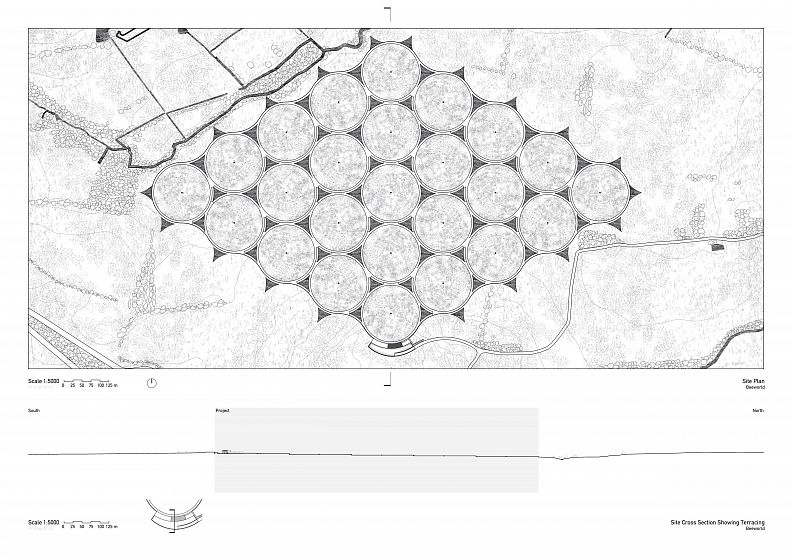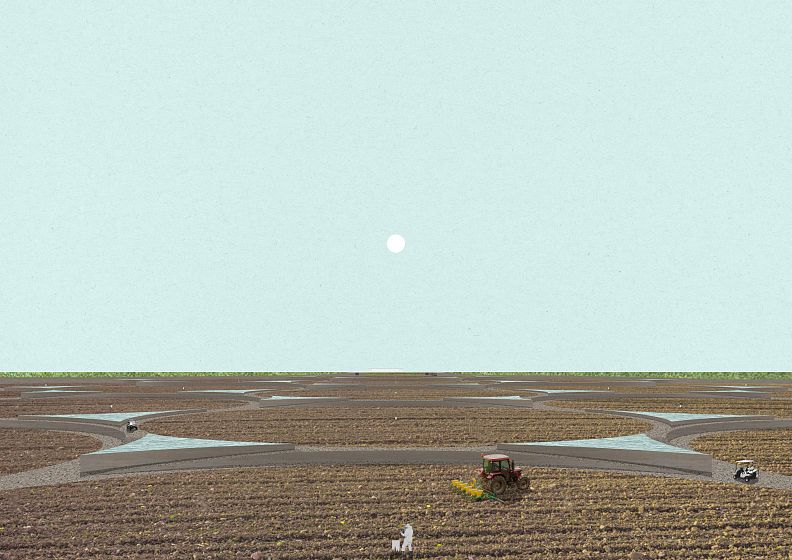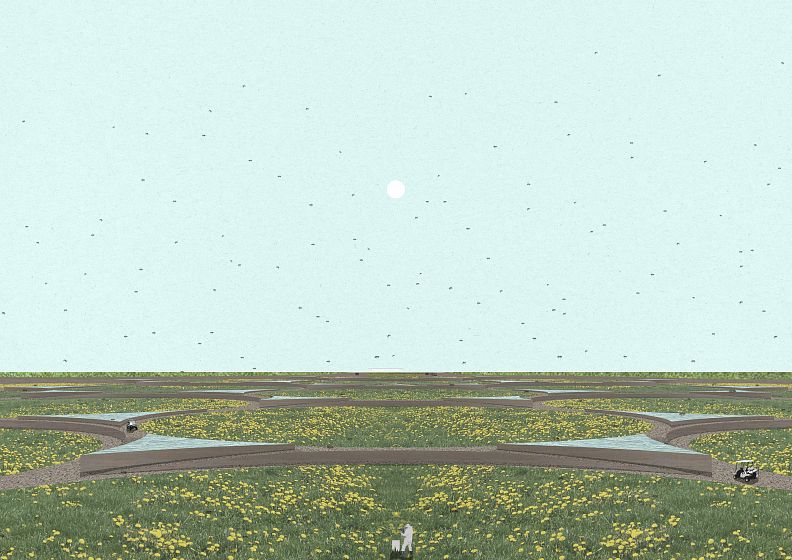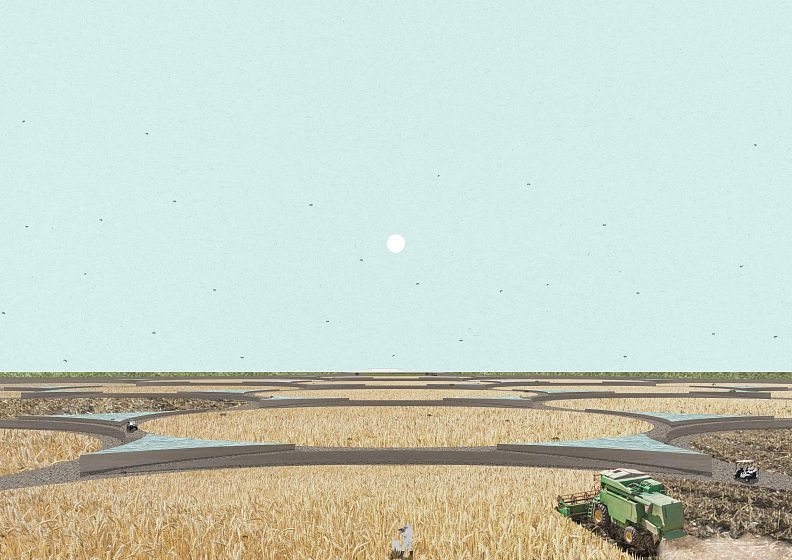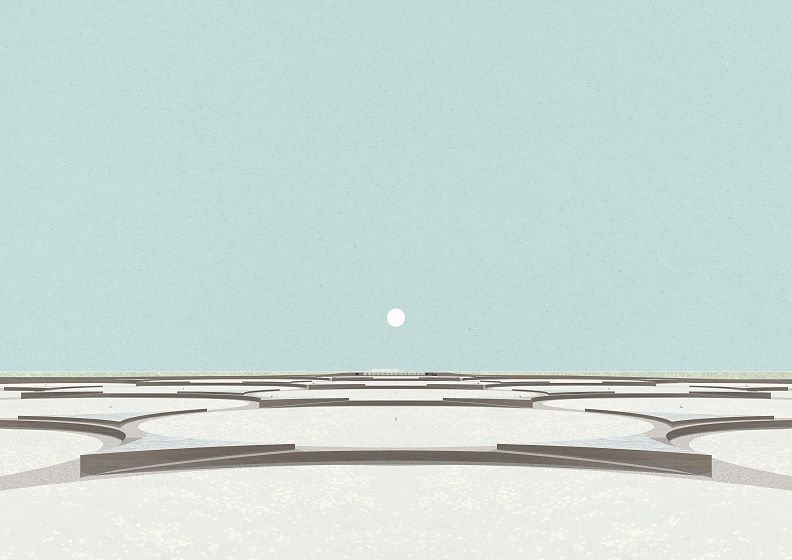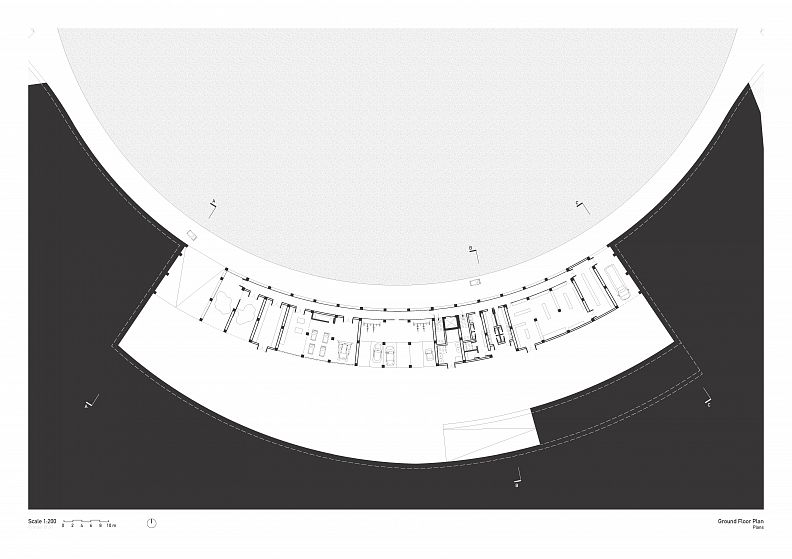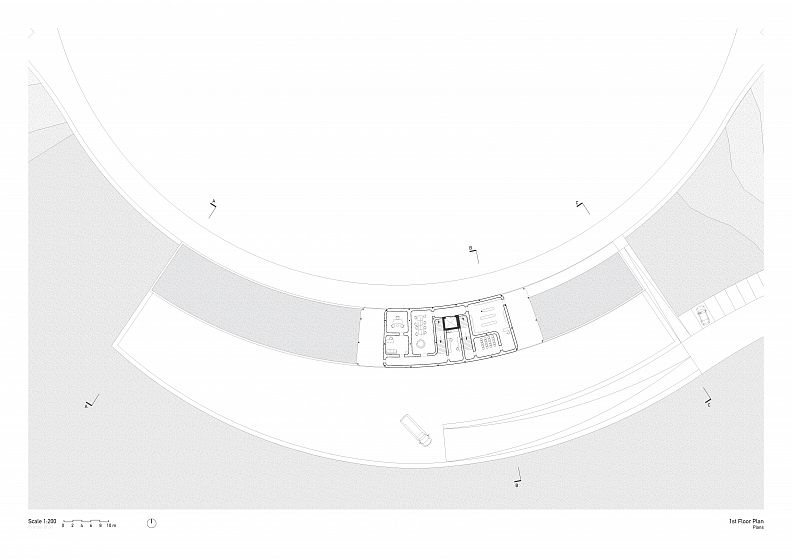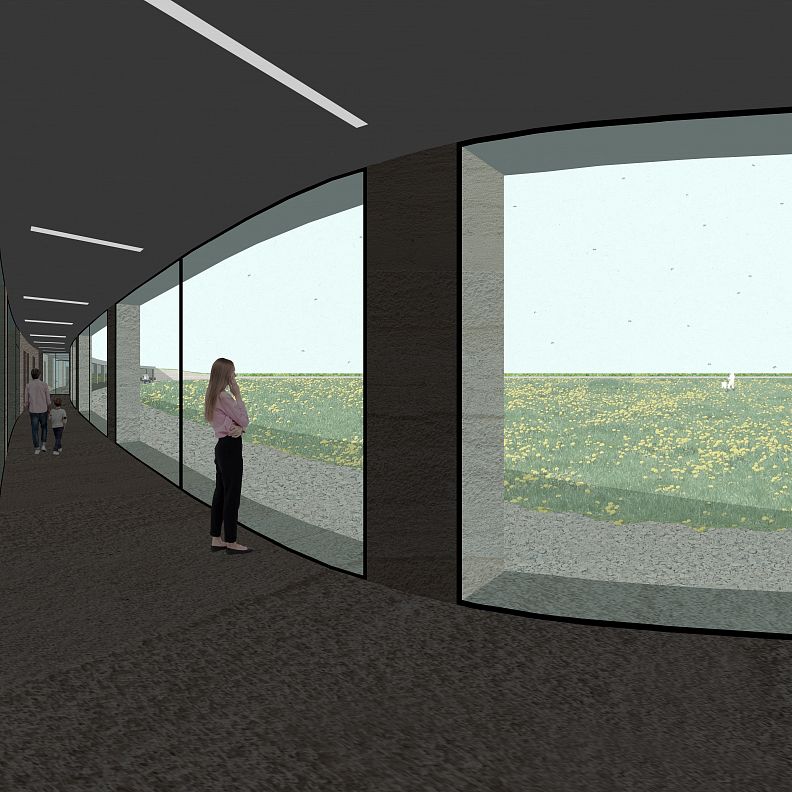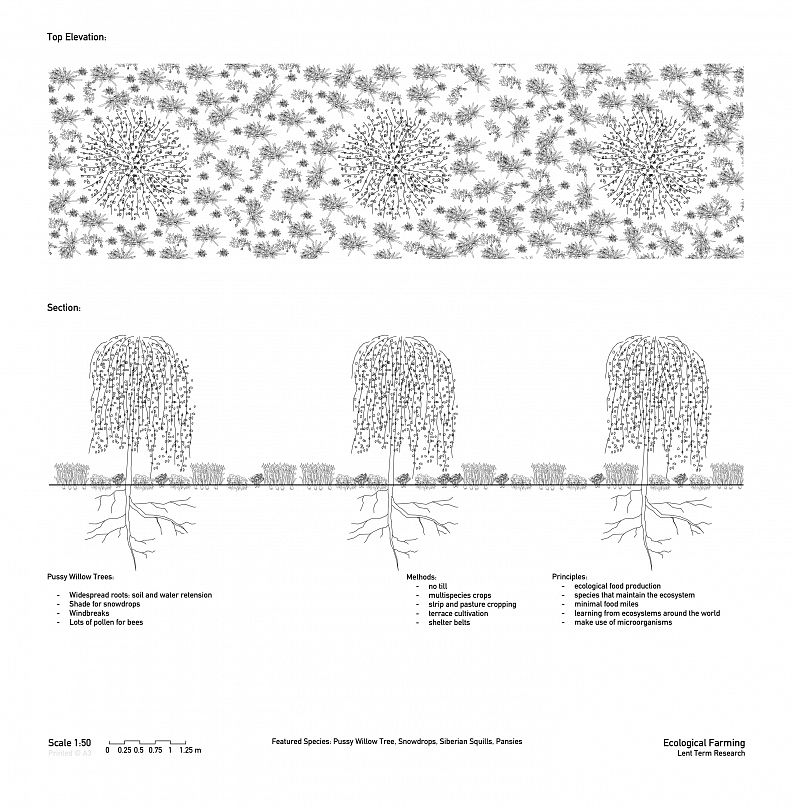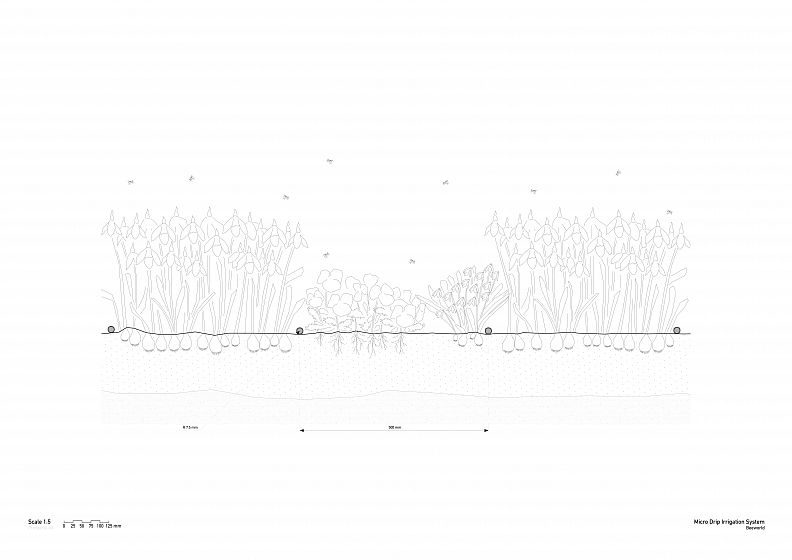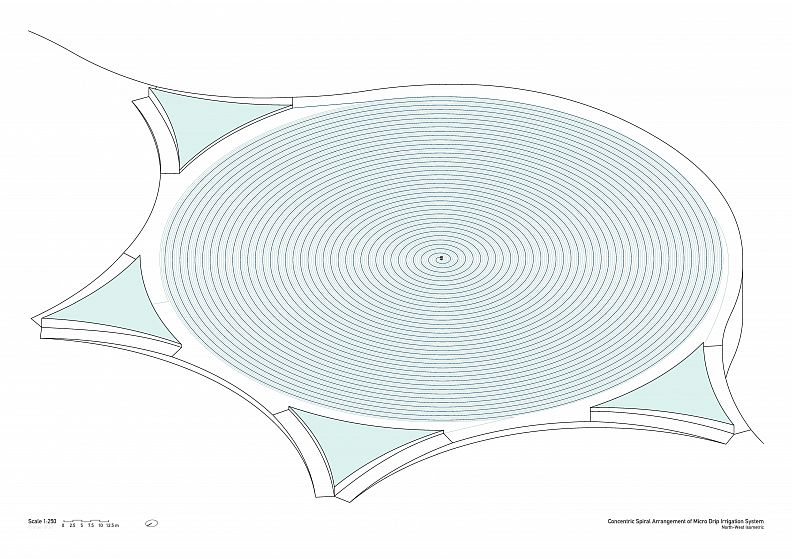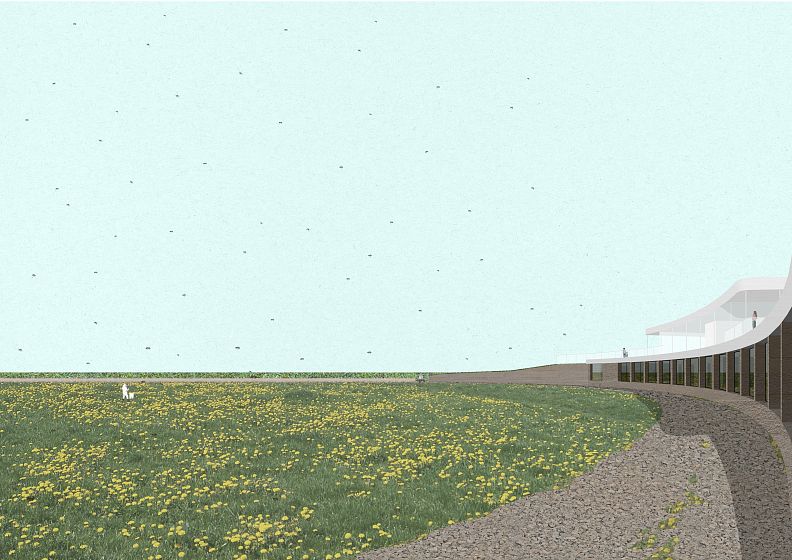Beeworld - Beelieve in the Future

Project idea
The idea for the project came from my love for honey, how little the average person of the population knows about honey production and the fact that bees are now an endangered species. My studio this year focused on projects in the town of Felixstowe, UK.
The first goal of the project was to transform beekeeping from being a traditional craft practiced in small numbers sporadically dispersed across a region into a mass production process which is as efficient as possible while not exploiting the honeybees involved in the process. It was also an aim not to disturb the also endangered bee species only found in coastal regions of the UK, the Sea Aster Mining Bee, by the introduction of the project in the region.
The second aim of the project was to create a visitor centre for families and schoolchildren to visit to learn about the importance of bees in our ecosystem, the lives of bees and beekeeping. The project aimed to offer experiences like collecting honey and going up close to beehives, driving around the complex in golfcarts, packaging of harvested honey and watching educational films.
The third aim of the project was to create a modular system for the hive placements which could be adapted worldwide for all terrains and climates, as the extinction of bees is a global issue that needs to be addressed. The project makes use of empirical data of the needs of a beehive, and builds a system on multiplying territories, each catering to one swarm of bees.
The fourth aim of the project was to create an expandable, economic farm building while providing a welcoming, state-of-the-art visitor centre as well. This is achieved by a ground floor which uses a concrete frame made of local, recycled aggregates and local cement (hence its sandstone colour). Furthermore, the first floor reflects this futuristic laboratory idea with its material choice: its smooth, exposed concrete floors, glass walls and white, floating roof.
The fifth aim of the project was to be environmentally conscious. This manifested itself in two ways. One was the site itself: the project uses rammed earth retaining walls (made of excavated earth from the site) for its terracing, while it has huge water tanks in the offcuts between territories to store rainwater. The building itself has a roof covered with solar panels to harness energy from the sun, has a natural ventilation system and has extensive green roofs for greywater collection and insulation. The rainwater collected by the headquarters through this green roof is stored in huge water tanks in a room designated to this on the ground floor.
Project description
At Beeworld beekeeping and honey production are placed on scientific, efficiency-driven principles. As bees are an endangered species that are vital for our ecosystem and food production, raising awareness about the role they play in our day-to-day lives is essential. The project attempts to do this by pairing an industrial apiary with a visitor centre for families and school trips.
The project was proposed for the outskirts of Felixstowe in the UK, where it is situated away from the local habitat of the endangered Sea-Aster Mining Bee only found in South-Eastern coastal areas of the UK. The fields of Beeworld are formed into terraces that fit in with the natural slightly sloping landscape of Felixstowe. Additionally, as bees cannot fly uphill while carrying pollen, it confines bees to their ‘levels’ and territories eliminating conflicts between hives, which could otherwise occur as bees are territorial animals.
Each circular field has a territory of 5 acres, the amount of land needed to sustain a beehive, with a hive in the middle of each. The 'offcut' territories between the fields are given over to pools of water for irrigation (which is recommended for agricultural land users in the South-East UK) and a place for bees to drink form. This results in an expandable modular system which is highly adaptable to different types of terrain and climates.
The fields of Beeworld are farmed with species of plants that have an unusually high nectar and pollen content to maximise pollination and honey production. Furthermore, in order not to endanger the lives of honeybees in the complex, the fields are farmed in keeping with the principles of ecological farming, using mixed crops, no chemicals and manual harvests. Irrigation is done by a micro-drip irrigation system, which is advantageous in comparison to other systems, because it is done on ground-level which means the bees do not get sprinkled and can continue working all day.
To enable employees and visitors of Beeworld to easily drive around the complex and collect honey, the different levels of terracing are connected by ramps. Little stone-paved paths lead from the edges of the circular fields to the beehives for easier access. This is essential as beehives need to be checked on every 3 days to protect them against parasites, illnesses and of course to collect honey. For more protection, each hive stands on a metal beehive stand to elevate it off the ground to keep water, small rodents and other insects away from the hive.
The terracing of Beeworld is held in place by rammed earth retaining walls using materials from the site. This environmentally conscious solution is fitting to the project as it can be made using local materials and contains minimal embodied carbon. It was also the option of choice, as it will degrade over time and will allow the terrain to fully revert back to its original slope without maintenance if the complex ever closes.
The headquarters of the complex sits on the top of the sloping terrain, overlooking the vast modular fields it manages. The ground floor containing the farm equipment and production spaces is sunken into the ground to make it blend into the landscape seamlessly and to make the complex appear smaller and less intrusive than it actually is. It is also made to have a heavier concrete frame (made of locally recycled aggregates) to support this feeling of being ‘dug out of’ the ground. This also supports the programmatic scheme of the Ground Floor: the activities there require a less controlled and dirtier environment than those of the 1st Floor.
In contrast, the offices, shop and visitor centre of Beeworld are all situated in the visible part of the building: in the lightweight, seemingly weightless pavilion on top. Offering commanding views of the vast territory occupied by the project, its walls are made of glass while the white, floating horizontal volume of the roof (which is lined with solar panels and natural ventilation shafts, while rainwater is collected by gradually accumulating it through the green roofs which is used for the servicing of the building) is held up by ultra-thin, white-painted solid steel columns. This materiality and appearance reflect the scientific and panopticon-like control the building exercises over the landscape.
Overall, Beeworld is an apiary made for the 21st century. It combines scientific precision with traditional methods of beekeeping and honey processing. It also propagates the importance of bees as a species for our ecosystem and for the survival of the human race. These aspirations also manifest in the special qualities of the building, which consists of a cave-like Ground Floor and a state-of-the-art pavilion on the 1st Floor.
Technical information
1. Collage:
Shows the project from the Visitor Entrance.
2. Theme Research:
Shows requirements and processes of beekeeping.
3. Site plan and section:
Shows the 5 acre circular territories occupied by a beehive.
Shows the water tanks in the off-cut areas between the circular territories.
Shows how modular the system is: one circular area can be taken out or added to the complex any time.
Shows how the project follows the gently sloping natural terrain.
4. Site Collages:
Show the site throughout the year and with the change of the seasons.
5. Ground Floor Plan:
Shows the spaces needed for maintenance, honey processing and packaging.
Shows the structural concrete frame and the infill walls.
Shows how the floor is cut into the ground.
6. 1st Floor Plan:
Shows the offices, lab for product development, visitor center and shop.
7. 3 sections:
Shows the journey of honey: from the fields, through processing and selling.
8. Collage:
Shows the Ground Floor visitors’ route views out to the fields.
9. Diagrams:
Shows the spatial organisation of the building.
Show circulation of employees and visitors through the building.
10. Building Process:
Shows process of assembling building.
11. Detail Sections:
Shows specific detailing to achieve the desired results from the "Project Description".
12. Environmental Strategies Detail Section:
Shows environmental strategies described in the “Project Description”.
13. Material Palette:
Shows samples of materials and window details to convey ideas elaborated on in the "Project Description".
14. Ecological Farming Detail:
Shows an example of ecological farming through a section of a spring field in the project.
15. Beehive Detail:
Shows the path leading to the beehive and its protective metal stand.
16. Irrigation Detail:
Shows the cross section of the micro-drip irrigation system.
17. Irrigation axonometric:
Shows how the pipes of the micro-drip irrigation system are laid out.
18. Collage:
Shows the project from the path adjacent to the fields.
For better quality reproduction of these images, please visit http://www.burmossy.com/y2p2.html
Co-authors
-


